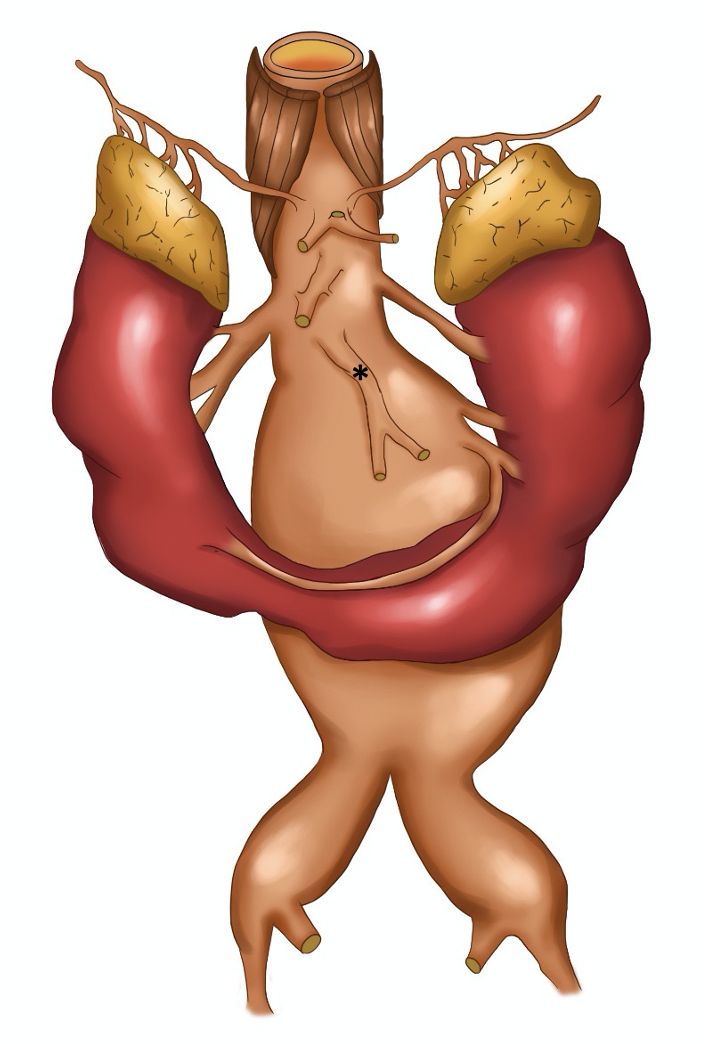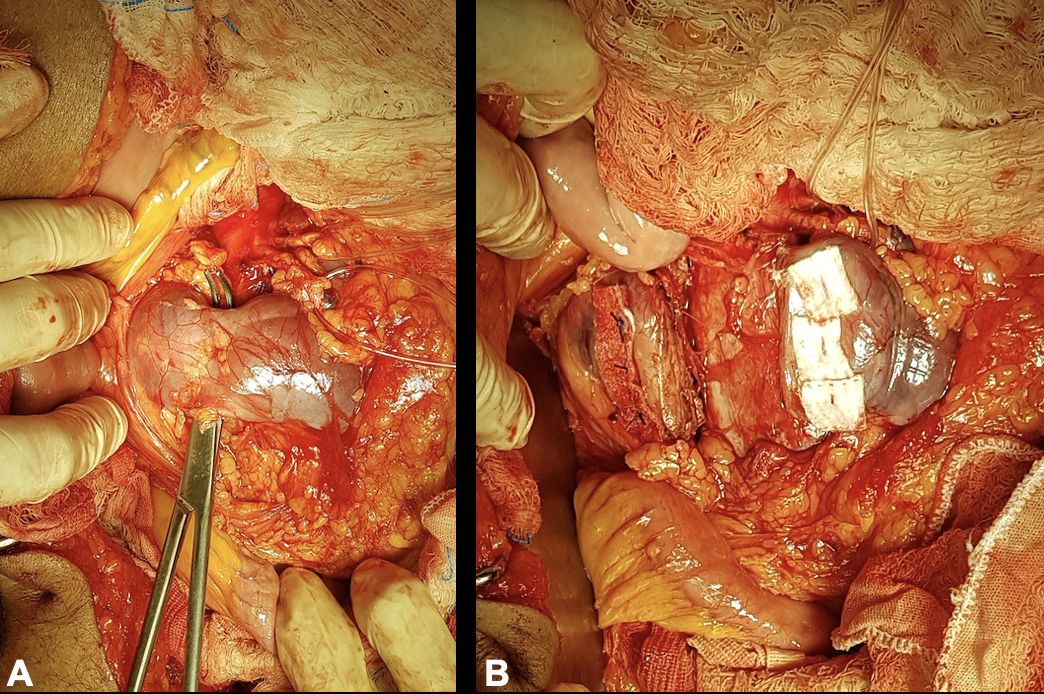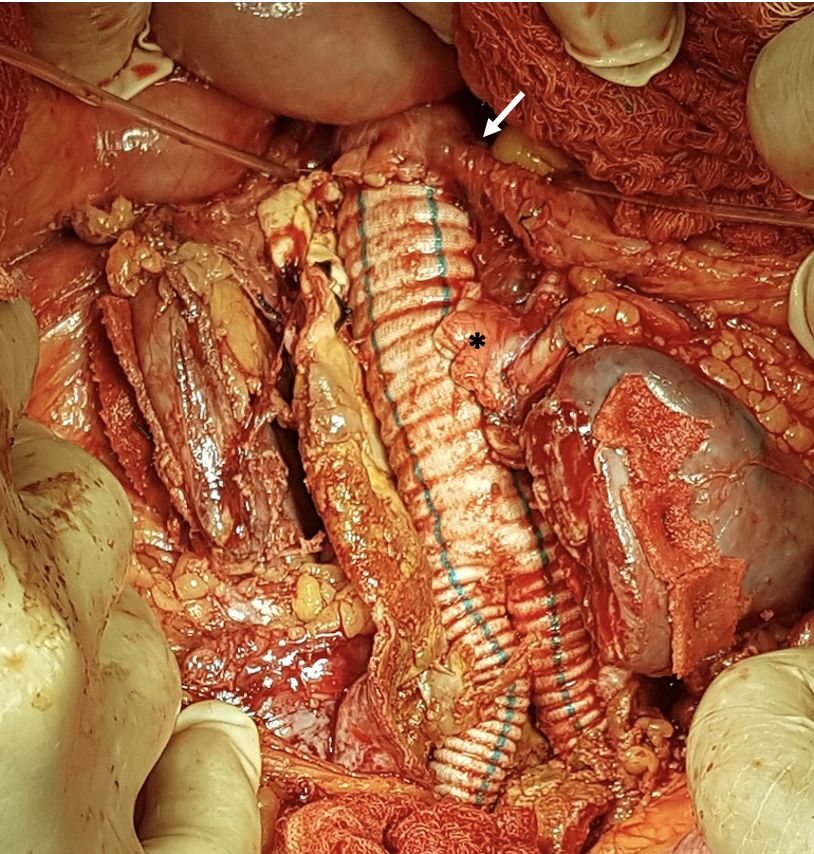Abstract
Horseshoe kidney is the most common congenital renal anomaly, occurring in 0.15-0.25% of newborns. The association of a horseshoe kidney with an abdominal aortic aneurysm is rare. Only 0.12% of patients requiring abdominal aortic repair have a horseshoe kidney. This therapeutic challenge constitutes a patient presenting with a symptomatic abdominal aortic aneurysm and a horseshoe kidney. The horseshoe kidney was supplied by 4 renal arteries, 2 of which emerged from the aneurysmal sac. The patient underwent urgent open repair, with transperitoneal exposure, interposition of a bifurcated aorto-bi-iliac Dacron graft and re-implantation of the 2 anomalous renal arteries on the Dacron main body. Postoperatively, the patient was discharged from the intensive care unit on day 3, and discharged home on day 8, maintaining normal serum creatinine.
Keywords:
congenital abnormalities; aortic aneurysm; abdominal aortic aneurysm; fused kidney; kidney/abnormalities

 Thumbnail
Thumbnail
 Thumbnail
Thumbnail
 Thumbnail
Thumbnail
 Thumbnail
Thumbnail
 Thumbnail
Thumbnail
 Thumbnail
Thumbnail
 Thumbnail
Thumbnail






